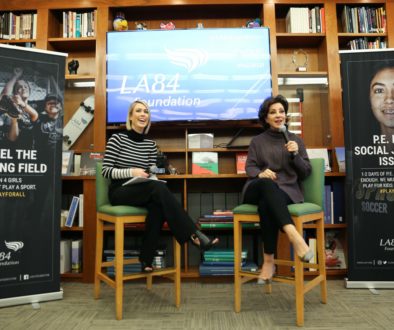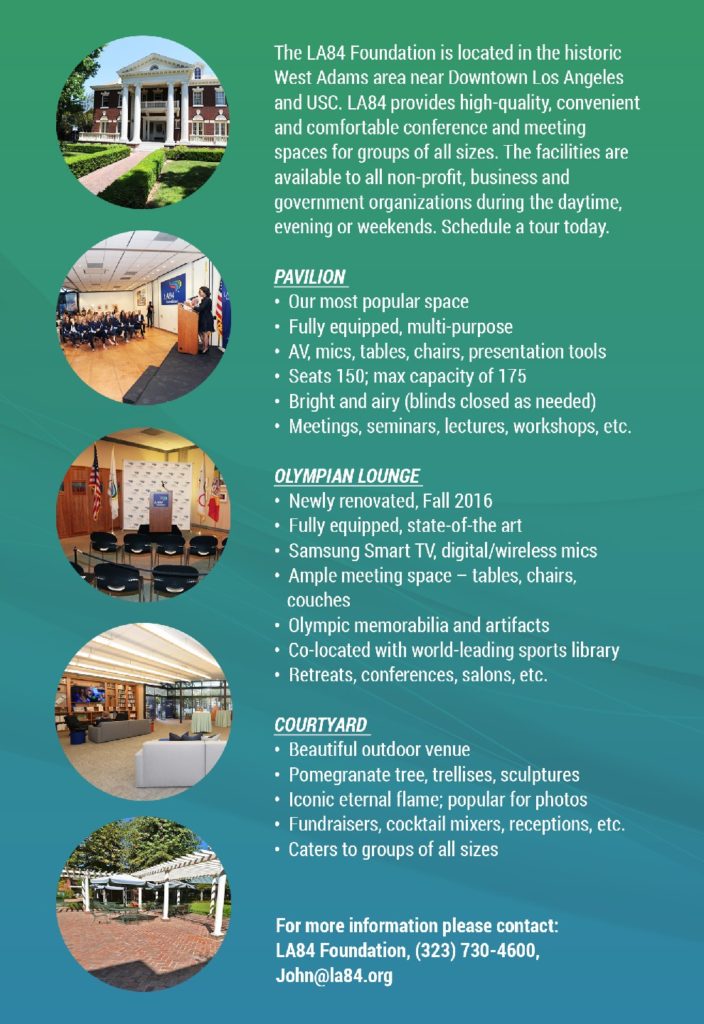SL Interview: Author Mark Hyman on America’s Youth Sports Obsession
As a journalist, coach and sports parent, Mark Hyman has been immersed in the culture of youth sports. His new book, titled “Until It Hurts: America’s Obsession with Youth Sports and How It Harms Our Kids” (Beacon Press; Amazon), is an indictment of what he sees as the myriad problems that have beset kids’ sports.
In researching and writing the book, Hyman interviewed coaches, parents, children, psychologists, sports medicine experts and Olympic athletes. What he discovered disturbed him. “Across the country, young players are all too frequent victims of a sports culture that seemingly is turning its back on them,” he writes in the introduction. “Injuries are just one troubling manifestation. With each passing season youth sports seems to stray further and further from its core mission of providing healthy, safe and character-building recreation for children.”
Hyman assigns much of the blame on parents, who have usurped control of youth sports. “It’s not the presence of adults that is distorting youth sports,” he writes. “Rather, the issue is our well-documented impulse to turn sports for children into a de facto professional league.” According to Hyman, “Only the kids are losers here. Their voices are rarely heard, and then only to justify the questionable judgment of adults.”
In the book, Hyman does not shy away from what he describes as his own “unflattering” behavior. He writes about having his son, Ben, pitch in a baseball game despite being injured. Writes Hyman: “I watched with regret and, in short order, remorse, as an injured boy attempting to please his dad lamely lobbed balls at home plate. . . Only one of us had anything to be disappointed about that evening. It surely wasn’t Ben.”
From 1986-1997, Hyman was a reporter with the Baltimore Sun. Today, the Baltimore-based writer is a contributing editor at Business Week. This is his second book; previously, he authored “Confessions of a Baseball Purist” with broadcaster Jon Miller.
As Hyman geared up for book promotion duties, SportsLetter spoke to him via phone.
-– David Davis
SportsLetter: Why did you decide to write this book?
Mark Hyman: I cover the business of sports for Business Week, and I’ve been writing for some time about the business of youth sports. I’m very interested in the ways that adults have shaped youth sports. Over time, I came to the conclusion that youth sports has been re-engineered in ways that suit the interests and tastes of adults, sometimes at the expense of kids. So, I wanted to write about how that happened and how that has shaped the culture of youth sports.
SL: When did parents initially take a large role in youth sports?
MH: Up until the 1920s and 1930s, sports for kids were primarily school based. Parents were not present in the sports lives of their kids in ways that we’re familiar with today, in overseeing the leagues and managing and coaching the teams and manning the concession stands. When schools started eliminating sports programs, it created a void. So, in the late 1920s and into the 1930s, parents began to fill that void. That’s when you see programs like the forerunner of Pop Warner football, in Philadelphia, and Little League Baseball, which begins in 1939. And, it’s Little League Baseball that really opens the floodgates in terms of the involvement of parents, especially after World War II and moving into the decade of the 1950s.
SL: Why have parents become so heavily invested in youth sports? Is it about status? Is it because sports provide a safe haven for their kids?
MH: It’s those things and more. I think that, generally, parents view sports as a healthy and wholesome activity. That’s a positive. But there are other reasons. We live in hyper-competitive culture, and parents like to see their kids competing. It’s not only sports. It’s ballet and violin and SAT scores and a host of other things. It’s in our DNA.
There’s also an economic incentive – or what parents perceive as an economic incentive – around the issue of college scholarships. In the book, I write about Tiger Woods, in 1978, being on the Mike Douglas show when he was two. That wasn’t the beginning, but it was a marker in this mindset that parents have developed: If you start kids young enough, and the training is intense enough, you can create a super athlete.
SL: What do you think is the lesson of Tiger Woods’ story?
MH: It would be interesting to know what Tiger thinks the lesson is. If I could have done one more interview for the book, that would have been it. The question I would ask Tiger is, “Do you think people are interpreting your life story in the proper way?”
I think that people are taking the wrong lessons from Tiger’s story. To me, sports for kids is not a career path. It’s not a means to an end. It’s about living in the moment. If your kid is having fun, then you’re doing something right. You want your kid to have fun, to make friends, to gain confidence and self-esteem, to want to play again the next year.
I often use that with my own kids, that if they say that they want to continue next year, it’s been a successful year. I’m not as interested in whether the team was 3-12 or 12-3, or what their batting average was or how many goals they scored. That’s less important to me than whether they want to play next year.
SL: What do parents expect these days from youth sports?
MH: One is the whole college scenario. There are parents who get feedback from coaches and other parents that their kids are particularly gifted at a sport. They start down the “Tiger” path. That means starting their kids early and specialization. That’s a key element in this. We’ve gone from a system where kids play a sport for three months and then go on to another sport to a time when kids are playing the same sport year-round. The parents invest a lot emotionally and a lot of time and money. It’s common for parents, in sports like swimming and soccer, to spend $10,000 or more, per year, on a kid’s sport. It’s understandable, although lamentable, that parents would expect some kind of return on that investment.
When I interviewed the soccer coach at the University of Connecticut, Ray Reid, for the book, he told me that parents actually approach him and say, “I wish you would re-consider and offer my son a scholarship because we’ve got a lot invested in his soccer career.” As he said to me, “What do they think their son is, a mutual fund?”
SL: Should parents take less interest in their kids’ sports lives?
ML: I think it’s a mindset. I think that the presence of parents is a very positive thing. We shouldn’t discourage that. Adjusting our expectations is really the key. We have to stop viewing youth sports as a steppingstone, as a means to an end. It’s not a career, it’s not a credential. Let’s have fun and use sports for the things that it can give our kids.
The other thing is, it’s not about us, the parents. This is something that I had a very hard time learning. In other words, if your child has talent on a sports field, it’s not a referendum on whether you’re a good parent. I think it’s easy for parents to view what their kid does on the field as a kind of validation.
SL: In the book, you write about being your son’s baseball coach and having him pitch in a game when he had tendonitis. To return to that moment, why did you have him pitch while he was hurt?
MH: I was thinking about the wrong things. I was thinking about winning, thinking about how important winning was to me. I was thinking about out-managing the gastroenterologist who was the coach of the opposite team. I was thinking about how pleased the parents of the other players on the team would be and how well they would think of me if we advanced one game deeper into the playoffs. I was thinking about how the trophy would look over our fireplace. Those were the wrong things to be considering.
In the book, I told some unflattering stories about myself because I thought that they were stories that could help other parents who are navigating their kids’ sports lives and dealing with anxieties and fears and expectations. That part was difficult. And, it was Ben’s life, too, not just mine. We talked about whether he would be comfortable sharing that part of his life. He’s been very good about it. He said, “Dad, get over it.”
SL: Do you see yourself as representative of a “normal” parent of a child involved in sports?
MH: I wrote the book for the average sports parent in part because I feel like I am the average sports parent. I’ve made mistakes, but I’ve also done a lot of very positive things. To some extent, I’m a prisoner of human nature. Most of us see ourselves in our children: we want them to succeed for their benefit, but we also gain something from that ourselves. That’s natural, that’s not going to change.
I think talking about this is good therapy. And, that’s my great hope for this book: That people will start talking about how they feel and how they can modify their behavior in ways that make the experience better not only for their kids but for them.
I love youth sports, and I don’t want to give anybody the impression that I think there’s anything inherently bad about youth sports. Just the opposite. I hope that, as people read the book, they will not come away with the impression that this is a blanket indictment of every parent, every coach, and every league. I clearly feel that there’s lot of positive things going on.
SL: What have parents done right in organizing youth sports?
MH: There are plenty of communities and leagues that are doing things right. To give one example: there’s a program in Fort Wayne, Ind., called Wild Cat Baseball. It’s unusual, perhaps unique, in two respects. Number one, all of the games are played during the day. There’s never a reason for a family to be racing around at dinnertime in the evening. More importantly, the parents are peripheral to the whole enterprise. Parents are not allowed to be coaches, and they’re even discouraged from coming to the games. The teams are coached by high school athletes and teachers in the community, but they’re not assigned to particular teams. They rotate so that each coach will coach multiple teams during the season. They also serve as the umpires. So, they don’t have any emotional investment in the outcome of the games. They’re just focused on the success of the kids.
SL: You write that you hope your book will “spark debate about the proper role for grownups” in youth sports. How would you describe the proper role?
MH: I think you want to encourage your kids. You want to give them opportunity. You also have to exercise your responsibility as an adult. That means, setting limitations. For instance, my son Ben loves baseball. He would play baseball 14 months out of the year, if that were a possibility. It’s up to my wife and I to set limits.
By the same token, we have to set limits for ourselves. I loved watching him pitch, but it wasn’t in his interest for him to be pitching all the time. So, it’s our responsibility to keep our kids safe. That should guide them, not whether their child is going to get a college scholarship in 2018.
SL: In the book, you write about Whitney Phelps, Michael Phelps’ sister, and the physical struggles she endured in her quest to be an Olympic swimmer. What lessons do you take from her story?
MH: Whitney was 10 years old when she started having symptoms. She was very driven – even at 10, she was focused on being an Olympian – and she didn’t volunteer this information to her mom [Debbie Phelps] or to her coach. That’s a problem right off. If a child is hurt, we would want them to share that with us.
Whitney doesn’t blame her mom. Her mom didn’t know, and her mom just wanted her to be the best swimmer she could be. She’s more critical of her coach, Murray Stephens. I quote her as saying, “We were workhorses. We would do whatever we had to do to be fast.” It’s unfortunate that she didn’t feel she could tell an adult what she was going through.
I don’t know if there’s a moral to the story other than, when we ask children to push to their physical limits, we have to be very alert to their well being. To me, the key aspect of the story is that Debbie Phelps learned from Whitney’s experience. She’s been very vigilant in protecting Michael’s emotional and physical health, and he made it through.
SL: How are parents or coaches supposed to know that a child is suffering an injury if they don’t say anything about it?
MH: When you’re not sure if your child is being totally honest, that’s where you earn your money as a parent. You have to go on your gut instinct and do what you think is best for your child. And, look, I’m in no position to judge anybody. My son told me that he was hurting, and I didn’t pay proper attention. So, I think it’s a very difficult issue to deal with.
SL: Related to that, the book references a couple of youth athletes who took advice from coaches that led to disastrous results. How do we prevent this from happening?
MH: You’re referring to a story in the book involving Don Hooton, whose son Taylor [a high school athlete] started taking steroids after his coach told him he needed to be bigger to compete. Taylor ultimately hanged himself. There’s also a story in the book about an Olympic diver, Kimiko Hirai, who had a prolonged bout with eating disorders. The common thread of those two stories is the influence, sometimes under appreciated by adults, that coaches can have on kids. We’re not always aware of how profoundly kids are listening to us and how desperately they want to please us and how seriously they take the advice that they’re being given and how sometimes they misinterpret that advice.
To me the lesson is, we have to be very explicit with kids. We have to make it clear to them that we’re not advocating certain kinds of self-destructive behavior.
SL: How is it that, with the millions of kids now involved in youth sports, childhood obesity has soared. How do you reconcile these two seemingly disparate points?
MH: There’s a number of potential explanations for that. There are kids who are not into youth sports. In fact, part of the impact of our youth sports culture is that there’s a big group of kids who are getting turned off to youth sports at a very early age. After age 11, participation in youth sports starts to fall. So, you’ve got a big population of kids who’ve already opted out. Those kids aren’t doing anything.
There’s also some research that kids burn more calories and are more active when they’re not participating in organized youth sports. That’s because, if you’re playing youth sports, you’re sitting on the bench for half the game. When you’re in less structured activities, you’re running around all the time.
SL: You write that Title IX has changed the face of sports for girls. What’s been the upside and downside of this explosion of growth?
MH: The upside exceeds the downside by a lot. The upside, of course, is opportunity. Girls have opportunity that equals what boys have had and continue to have. That’s a very big up.
The downside is that, increasingly, sports for girls has been affected by all of the excesses that are present in sports for boys. It’s this gold rush mentality about training your child up to the level of a college athlete. It’s actually more understandable on the girls’ side because the odds of a girl actually getting a college scholarship are much more favorable.
SL: You also note that Carl Stotz, who invented Little League Baseball, eventually disowned what his creation had become. What happened to Little League Baseball?
MH: I love Little League Baseball. I played Little League Baseball. When I was a child, my family and I attended the Little League World Series as far back as 1965. I think the idea is a good one and pure. But the problems of Little League are mostly about reining in the parents. Let’s take the curveball. Little League Baseball now has rules that govern lots of safety issues, from breakaway bases to helmets with earflaps. They eliminated the on-deck circle because kids were getting hurt. But they do nothing to protect kids from throwing curveballs, and this is a serious issue. Some 40 years ago, orthopedics surgeons were warning about the dangers to 11- and 12-year-olds throwing curveballs. The problem is, Little League Baseball can’t enforce this because the parents won’t buy in.
SL: Do you think that ESPN should be allowed to broadcast the Little League World Series?
MH: I’ve never spoken to a child psychologist who thought it was a good idea. They’re a number of them quoted in the book who feel that it’s not appropriate for a 12-year -old to be playing baseball on national TV. That’s good enough for me. As much as I enjoy watching the Little League World Series, I have a hard time substituting my judgment for child psychologists who’ve looked at this analytically.
SL: You write that soccer, baseball and ice hockey have reported a decrease in participation among youth, while sports that require less adult supervision, like snowboarding and skateboarding, have shown increases. What do you make of this?
MH: I think kids are telling us, maybe indirectly, that though they appreciate our support, they’re very capable of playing without us supervising. In a sport like skateboarding, kids can make their own rules and break their own rules. I think that’s part of the appeal of those sports.
Ironically, there’s a generation of kids who grew up skateboarding who are now the parents. They’re familiar with the sport, they’re into it, and they’re supervising in a way that their parents never did.
SL: Was there anything that surprised you in the research and writing of this book?
MH: There was one moment that truly surprised me. It was an interview I was doing with John DiFiori, the chief of the sports medicine division at UCLA. He’s done quite a number of academic papers, particularly about gymnasts, and we were talking about the history of overuse injuries. He said to me that, 20 years ago there was rarely mention of overuse injuries in published research. The reason for that is, when kids play on their own, they don’t suffer overuse injuries. If a kid is playing soccer and his knee hurts, he stops playing. Or, if a kid is throwing a baseball and his elbow hurts, he stops throwing. Overuse injuries have only become part of the scene since adults have been supervising kids so closely in sports. Now, they account for as many as 50 percent of all youth sports injuries. That was so counter-intuitive to me. In this one narrow context, you might say that sports for kids are more dangerous because of the presence of adults.
SL: “Until It Hurts” has been reviewed in several newspapers. One review, in the Wall Street Journal, attacked your stance and some of the statistics you cite in the book. What was your reaction to that?
MH: The reviewer [at the Journal] had two issues with the book. One, he said it was overwrought. I can live with that. It’s a book about kids and parents who’ve had problems with youth sports. I wasn’t going to write three chapters on kids who’ve had idyllic experiences; that’s another book.
The reviewer also questioned whether I sufficiently backed up the book with data. I used the numbers that I thought were important to illuminate the problem. I also think there’s a lot we don’t know. If he’s pointing out that it’s difficult to track exactly the dimensions and the extent of the problem, he’s right.
To me, what’s most compelling about this issue are the human stories. That’s what I spent my time doing, finding families and others who are involved with this tell me the stories that they think illustrate the problem. I think the book does that.




